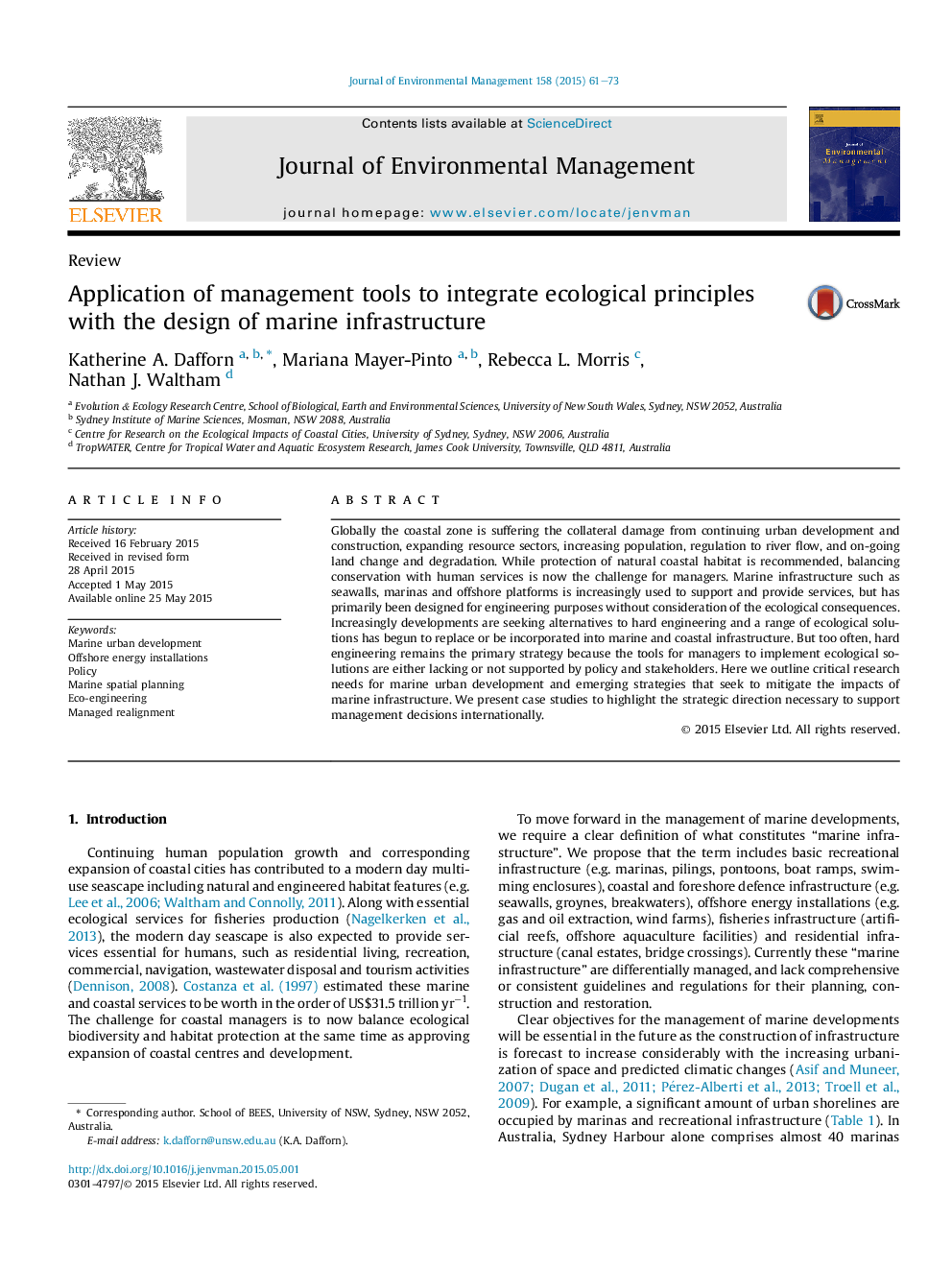| Article ID | Journal | Published Year | Pages | File Type |
|---|---|---|---|---|
| 1055580 | Journal of Environmental Management | 2015 | 13 Pages |
•Marine structures such as seawalls and offshore energy platforms are increasing.•Structures are primarily designed for hard engineering objectives.•Alternatives include eco-engineering, soft engineering and habitat restoration.•Policy and stakeholder involvement can drive research to mitigate impacts.
Globally the coastal zone is suffering the collateral damage from continuing urban development and construction, expanding resource sectors, increasing population, regulation to river flow, and on-going land change and degradation. While protection of natural coastal habitat is recommended, balancing conservation with human services is now the challenge for managers. Marine infrastructure such as seawalls, marinas and offshore platforms is increasingly used to support and provide services, but has primarily been designed for engineering purposes without consideration of the ecological consequences. Increasingly developments are seeking alternatives to hard engineering and a range of ecological solutions has begun to replace or be incorporated into marine and coastal infrastructure. But too often, hard engineering remains the primary strategy because the tools for managers to implement ecological solutions are either lacking or not supported by policy and stakeholders. Here we outline critical research needs for marine urban development and emerging strategies that seek to mitigate the impacts of marine infrastructure. We present case studies to highlight the strategic direction necessary to support management decisions internationally.
